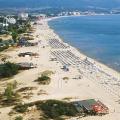Atmospheric pressure is one of the most important meteorological elements. The change in pressure in space and time is closely related to the development of the main atmospheric processes: the inhomogeneity of the pressure field in space is the direct cause of the occurrence of air currents, and pressure fluctuations in time are the main cause of changes in the weather in a particular area.
Atmospheric pressure is the force with which a column of air extending from the Earth's surface to the upper boundary of the atmosphere presses 1 cm 2 earth surface... For a long time, the main device for measuring pressure has been a mercury barometer, and the value is usually expressed in millimeters of a mercury column that balances the air column.
Another measuring principle, based on the deformations of an elastic, empty metal box, which it experiences when pressure changes, is used in aneroids, barographs, tide gauges, and radiosondes. Devices of this type are calibrated according to the readings of a mercury barometer.
At present, in meteorology, atmospheric pressure is measured in absolute units - hectopascals (hPa). Normal atmospheric pressure is 760 mm Hg. Art. = 1013.3 hPa = 1013.3 mb (1 mb (millibar) = 1 hPa). To switch from the pressure value expressed in millimeters of mercury to the value in hectopascals, the pressure value in millimeters must be multiplied by 4/3, for the reverse transition - by 3/4.
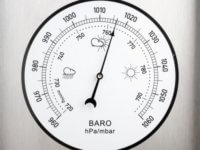
Atmospheric pressure always decreases with altitude. As a result, under the same meteorological conditions at higher parts of the earth's surface, the pressure will be less than at lower ones. In practice, if the calculations do not require great accuracy, the degree of pressure change with height can be characterized using the vertical pressure gradient or its inverse pressure stage. The pressure stage is the height to which you need to rise or fall in order for the pressure to change by 1 millibar. The value of the pressure stage is not constant. It increases with decreasing air density: the higher we go, the slower the pressure changes and the larger the baric stage becomes. At the same pressure, the baric level in warm air is greater than in cold air.
The distribution of pressure over the earth's surface and seasonal differences in it are created by thermal and dynamic factors. The first is, first of all, the influence of the earth's surface: over cold surfaces, conditions are favorable for increasing pressure, over highly heated ones - for lowering. Dynamic factors are understood as processes, as a result of which air is injected in some areas (pressure increase), in others - outflow (pressure decrease). When both factors interact, their effect is either enhanced or weakened.
In the very general view the distribution of pressure near the earth's surface could be characterized as zonal, however, due to the influence of the relief of the earth's surface and the listed factors, the zoning is violated.
When comparing the maps of the mean multiyear atmospheric pressure for January and July, a difference in the magnitude and direction of the pressure gradients is revealed. In winter, the gradient is much larger than in summer, and is directed from the southeast to the northwest, while in summer the pressure changes are slower. In January, the difference between the highest and lowest pressure is more than 30 hPa, in July - only 8 hPa.
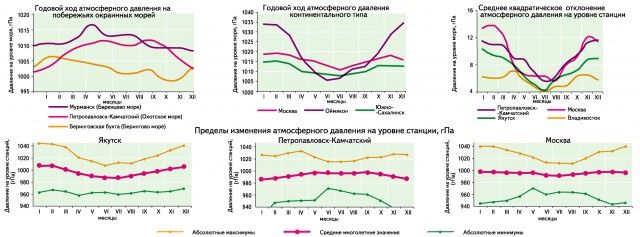
In winter, in most of the territory of Russia, an increased background of atmospheric pressure is observed, due to the influence of a powerful Asian anticyclone, which, already in September, begins to emerge in the regions of the most low temperatures(Tuva depression and the Verkhoyansk pole of cold). The anticyclone reaches its maximum intensity (over 1030 hPa) in January. Its center is located over the Mongolian Altai, a spur stretches out to Yakutia.
The areas of the lowest pressure (less than 1005 hPa) are located above, and. On the coast eastern seas the close proximity of high and low pressure areas leads to very large pressure drops, and, as a consequence, stable strong winds.
At the beginning of spring, there is a tendency for the restructuring of the pressure fields and a general slight decrease in pressure occurs. As the continent warms up, the contrasts of temperature and air pressure between land and sea are smoothed out, the baric field is rearranged, becoming more homogeneous. In summer, over the territory of Russia, due to the heating of the mainland, the pressure continues to decrease, the Asian anticyclone collapses and a zone of low atmospheric pressure forms in its place, and an area of higher pressure over seas with a relatively cold surface.
The annual variation of atmospheric pressure in most of the territory of Russia corresponds to the continental type, characterized by a winter maximum, a summer minimum and large amplitude... The same annual pressure variation is observed in the monsoon region. Of the Far East... Maximum annual amplitude pressure at sea level reaches 45 hPa and is noted in the Tuva basin. With distance from it, it sharply decreases in all directions. The smallest annual fluctuations in air pressure take place in the north-west of Russia, where active cyclonic activity is observed throughout the year.
In areas of intense cyclogenesis, the normal annual course is often disrupted. Depending on the characteristics of the atmospheric circulation, this is expressed in a shift or the appearance of additional maxima and minima. Thus, in the northwest of Russia, the pressure maximum shifts to May, while in and in the northern part of Kamchatka, secondary maxima and minima appear in the annual course.
The purely oceanic type of the annual variation of atmospheric pressure, which has a maximum in the summer months and a minimum in winter, is noted only in the southern part of the peninsula. In the mountains, up to a certain height is preserved continental type annual pressure variation. In the alpine zone, an annual cycle is established that is close to the oceanic one. The average annual values of air pressure are highly stable over time and vary insignificantly from year to year, on average by 1–5 hPa.
Changes in average monthly values from year to year significantly exceed the annual ones. Their range can be judged by the difference between the highest and lowest values of the average monthly pressure. The daily variation of pressure in temperate latitudes It is weakly expressed and is measured only by tenths of hectopascals. The characteristic of the average long-term daily variability of atmospheric pressure is the standard deviation.
The limits of pressure change at each specific point can be judged by its extrema. The greatest difference between the absolute maximum and minimum is observed in the winter months, when the processes of cyclo- and anticyclogenesis are most intense.
In addition to periodic fluctuations, which include the annual and daily variations, atmospheric pressure experiences non-periodic fluctuations that affect the well-being of meteorological people. An example of non-periodic fluctuations is the inter-daily and intra-daily pressure variability. In the autumn-winter period, during the passage of deep cyclones, the change in pressure between observation periods (over three hours) in temperate latitudes can be 10–15 hPa, and between adjacent days it can reach 30–35 hPa and more. So, in a case was recorded when, in three hours, the pressure dropped by more than 17 mb, and in the pressure difference between days it reached 50 hPa.
Maps of average long-term pressure fields give an idea of some concepts of the general, which is a set of main air currents over the globe carrying out horizontal and vertical exchange of air masses. The structural elements of the general circulation of the atmosphere are air masses, frontal zones, western transport, cyclones and anticyclones.
If the Earth's surface were uniform, then in the northern hemisphere there would be a west-east transfer air masses, and isobars on pressure field maps would have a latitudinal (zonal) direction. In fact, the zoning is violated in many areas, which can be seen even from the maps of the average monthly pressure fields in January and July. With a decrease in the integration period (ten days, days), the transport disturbance increases, and closed areas appear on the pressure maps. The reason for the violation of the zoning of air currents is the unequal heating of the continents and oceans and, consequently, the air masses forming above them.
Areas of high pressure, outlined by closed isobars, are called anticyclones (Az), and areas of low pressure are called cyclones (Zn). Cyclones and anticyclones¦ are large-scale eddies that are important structural elements general circulation of the atmosphere. Their horizontal dimensions range from several hundred to 1.5–2.0 thousand kilometers. When cyclones and anticyclones move, an inter-latitudinal exchange of air masses, and, consequently, heat and moisture, occurs, due to which the temperature is equalized between the pole and the equator. If this exchange did not occur, it would be 10–20 ° lower in temperate and high latitudes than in reality.

I would be grateful if you share this article on social networks:
Site search.
Sudden changes in temperature and frequent changes in weather in a short period of time often have negative consequences for health. It has already been noticed that with frequent changes in the weather, people call an ambulance much more often, which means they feel worse.
Despite the fact that there is no such diagnosis as "meteorological dependence", doctors do not deny that the weather really affects our well-being. It is generally accepted that the weaker a person's immunity and more chronic diseases, the more sensitive a person reacts to changes in the weather. Why?
Where does weather dependence come from?
According to statistics, meteorological dependence is a hereditary trait in about 10% of cases. Most often it is inherited through the maternal line. 40% of cases of meteorological dependence occur due to serious vascular diseases. And the remaining 50% is age and sores that have accumulated throughout life (from birth trauma to stomach ulcers or obesity).
The most common diseases leading to meteorological dependence are atherosclerosis, hypertension and hypotension, chronic respiratory diseases (tonsillitis, tonsillitis, pneumonia), and autoimmune diseases (for example, diabetes mellitus).
If meteorological dependence is observed in a child, then most likely it is a consequence of a severe mother's pregnancy, difficult childbirth, postmaturity, or, conversely, prematurity.
As practice shows, most of the diseases acquired by a person throughout life remain with him forever. Therefore, people with meteorological dependence can only follow the weather reports and take appropriate measures to alleviate the symptoms.
Cold snap is bad for health
Doctors believe that a sharp drop in air temperature by 12 degrees or more over a short period of time (12 hours) has a negative effect on a person's well-being. The temperature range is also important. If, for example, the temperature has decreased from +32 degrees to +20, then this is not scary and is not fraught with any negative consequences. But if the spread of fluctuations is in the region of 0 degrees or in a sharp minus (for example, from -18 to -24 degrees), then this is fraught with serious health consequences.
Who will be primarily affected by extreme temperature changes? These will be patients who have been diagnosed with vascular diseases of the heart and brain, as well as patients who have recently suffered a stroke or heart attack. Doctors strongly recommend that these people avoid physical and mental stress in such weather, adhere to a salt-free diet and be sure to visit a doctor so that he can prescribe appropriate medications for them in this case.
High atmospheric pressure
Elevated atmospheric pressure is above 755 mm Hg. What kind of people feel bad about high barometric pressure? First of all, these are asthmatics and people with mental illness, prone to displaying aggression. Asthmatics with high blood pressure feel a lack of oxygen, but people with mental disabilities feel increased anxiety and causeless melancholy.
At elevated atmospheric pressure, the cores also feel bad, especially those who have attacks of angina pectoris.
Hypertensive and hypotensive patients do not particularly suffer from high atmospheric pressure, but only on condition that the increase occurred gradually, and not abruptly.
During this period, you need to try not to burden yourself with physical exercise. You can thin blood and dilate blood vessels with the help of medicines, black hot tea. And if there are no contraindications, then you can pamper yourself with a glass of brandy or a glass of red wine.
Low atmospheric pressure
Low atmospheric pressure is when the mercury column falls below the 748 mm mark. First of all, they will feel a decrease in hypotensive pressure. They will feel sleepy, dizzy, and tired. Hypertensive patients will also suffer (joint aches, headache and tinnitus).
Low atmospheric pressure will also be felt by people with cardiac arrhythmias - arrhythmia, bradycardia, tachycardia.
But the most serious problem of low atmospheric pressure is a sharp deterioration in mental balance in people prone to depression and suicide.
Nevertheless, according to doctors, it is easier to neutralize the symptoms of low blood pressure than high blood pressure. The first thing to do is to provide yourself with fresh air (for example, open a window). It is very important to sleep well, not only at night, but also during the day. You need to eat something moderately salty, for example, a salted tomato or herring.
Snowfall
70% of people in snowy weather do not feel any changes in their condition. Many people even like this weather, and they feel a surge of positive emotions.
However, people suffering from vegetative-vascular dystonia feel bad. The cerebral vessels in this disease do not work correctly, therefore, in such weather, a person may feel dizziness, nausea and a feeling of stunnedness. Security measures must be taken. First of all, these are vascular preparations prescribed by the attending physician, as well as preparations that increase the tone - eleutherococcus extract, succinic acid or strong tincture of ginseng.
Windy weather
It is strange, but adult men practically do not react to windy weather, but women, especially prone to migraine attacks, do not feel very well. Also, little children under three years old do not react well to the wind.
But asthmatics in windy weather feel great, it becomes easier for them to breathe.
If you don't feel very well in windy weather, use a proven folk recipe: mix in equal amounts peanut butter, lemon, flower honey. Take this mixture several times on windy days.
Quiet weather
Do you think that all people should feel good in calm, calm weather? But no. In this weather, some women, especially those over 45, and teenagers begin to feel anxious. It is caused with hormonal fluctuations. People with schizophrenia also feel unwell. Doctors have not fully figured out what this is connected with. The most widespread opinion is that in the absence of air layers at a height of one to one and a half meters above the ground, the maximum concentration of pollution is achieved. If this is true, then near a fan or air conditioner, the condition should improve. 
Thunderstorm
Thunderstorms from the point of view of well-being can also be a negative phenomenon. This is due to the strong electromagnetic field that occurs before a thunderstorm. People with an unstable psyche are very sensitive to it. Menopause women can also feel bad during thunderstorms. The worst part is that there is no way to alleviate the feeling of being unwell. Well, perhaps, hide deep underground. So, as an option, you can go down to the underpass.
Heatwave
Intense heat affects many people negatively. It becomes the cause of mental depression, blood supply to many organs deteriorates, blood pressure drops. Moreover, the more humidity and stronger wind- the more these symptoms are aggravated.
How can you help yourself? Drink plenty of water mixed with lemon, apple or pomegranate juice and take a cool shower to activate the nerve receptors in your skin. And, of course, take care of yourself.
Many factors are capable of influencing the blood pressure indicators, including the atmospheric pressure drop - the gas envelope surrounding the planet, pressing with a certain force on the surface.
The question arises, how does low or high atmospheric pressure affect a person? The most acceptable indicator for humans is 760 mm Hg. Slight fluctuations in any direction up to 10 mm do not affect SD and DD in any way, do not affect well-being.
In a healthy person, the condition will not worsen with a strong drop. However, this statement does not apply to hypertensive and hypotensive people, meteorological people. Changes in weather conditions can provoke a sharp decrease or increase in blood pressure.
Oscillations in the atmosphere negatively affect the functionality of the cardiovascular system, blood vessels, which leads to lability of the readings on the tonometer.
Atmospheric and blood pressure: relationship
IT'S IMPORTANT TO KNOW! Hypertension and pressure surges caused by it - in 89% of cases kill the patient with a heart attack or stroke! Two thirds of patients die in the first 5 years of the disease! The "silent killer", as cardiologists dub it, takes millions of lives every year. Normolife. Normalizes blood pressure in the first 6 hours thanks to the bioflavonoid. Restores vascular tone and flexibility. Safe at any age. Effective at 1, 2, 3 stages of hypertension. Irina Chazova gave her expert opinion on the drug ...
 The pressure rate in the atmosphere varies from 750 to 760 mm. However, such numbers are rare. With an increase, the weather improves, and the body of hypertensive and meteorological people begins to "rebel".
The pressure rate in the atmosphere varies from 750 to 760 mm. However, such numbers are rare. With an increase, the weather improves, and the body of hypertensive and meteorological people begins to "rebel".
If the atmospheric load decreases, then the weather is cloudy, and hypotensive patients feel much worse. They endure such changes the hardest.
This circumstance is due to the fact that a decrease in the numbers in the atmosphere leads to a decrease in the "pressure" in the blood vessels. In addition, the concentration of oxygen decreases, which complicates the functioning of the respiratory system. The pulse quickens, while the rhythm of the heart slows down.
Together, these factors can lead to a sharp decrease in diabetes and DD in hypotensive patients, as a result, fainting or exacerbation of concomitant pathologies.
Effect of atmospheric pressure on blood pressure:
- In hypotonic patients, with a decrease in atmospheric parameters, the pressure drops sharply; their increase does not affect well-being.
- With a decrease in atmospheric load, hypertensive patients feel good; its growth provokes a number of negative symptoms, can lead to hypertensive crisis, stroke and heart attack.
- If people have diseases of the cardiovascular system, then fluctuations in weather conditions do not go unnoticed. Symptoms appear: severe headache, increased intracranial pressure, shortness of breath, pain in the abdomen.
Atmospheric indicators and air temperature also affect the mental state of a person - aggression, irritability and agitation, instability of the emotional state appear.
Influence on blood pressure of cyclones and anticyclones
During cyclones, the air temperature rises, precipitation, high humidity and cloudiness are observed. The oxygen level drops significantly, while the carbon dioxide concentration increases.
Such weather conditions negatively affect the well-being of a person with chronically low blood pressure. Due to air deficiency, hypotensive patients experience a spectrum of alarming symptoms.
In the body, blood circulation slows down, the frequency of pulse beats per minute decreases, internal organs and tissues suffer from a lack of oxygen and nutrients. As a result, SD and DD are further reduced.
After the arrival of the anticyclone, dry weather without wind is established. The accumulation of harmful impurities occurs in the air, the gas content increases several times. How does high atmospheric pressure affect a person?
A healthy person will not notice a change in his condition. In hypertensive patients, there is a sharp jump in blood pressure, symptoms are revealed:
- Heartbeat increases.
- Hyperemia of the skin.
- General weakness.
- Pulsation in the head.
- Nebula of vision.
- Noise and ringing in the ears.
Elderly people with a history of vascular and cardiovascular diseases are especially prone to changes. The likelihood of a hypertensive attack with neurovegetative disorders is increasing.
What increases blood pressure?
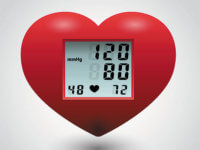 The systolic and diastolic values depend on many factors. These include smoking, drinking alcohol, hot season, diet, daily regimen, etc. Hypertensive and hypotensive patients are forced to give up a lot in order to maintain the numbers within normal limits.
The systolic and diastolic values depend on many factors. These include smoking, drinking alcohol, hot season, diet, daily regimen, etc. Hypertensive and hypotensive patients are forced to give up a lot in order to maintain the numbers within normal limits.
How does coffee affect a person's blood pressure? Coffee beans contain a high concentration of caffeine, a powerful herbal stimulant with a tonic and invigorating effect.
The drink helps to increase the blood pressure in hypertensive patients, but not for long. After a few hours, the numbers return to normal on their own. If you drink the drink on a regular basis, each time your blood pressure will decrease more slowly, and then remain elevated. You can substitute chicory for coffee.
Atmospheric pressure means the pressure of atmospheric air on the surface of the Earth and objects located on it. The degree of pressure corresponds to the weight of atmospheric air with a base of a certain area and configuration.
The basic unit of measurement of atmospheric pressure in the SI system is Pascal (Pa). In addition to Pascals, other units of measurement are also used:
- Bar (1 Ba = 100000 Pa);
- millimeter of mercury (1 mm Hg = 133.3 Pa);
- kilogram of force per square centimeter (1 kgf / cm 2 = 98066 Pa);
- technical atmosphere (1 at = 98066 Pa).
The above units of measure are used for technical purposes, with the exception of millimeters of mercury, which is used for weather forecasts.
The barometer acts as the main instrument for measuring atmospheric pressure. Devices are divided into two types - liquid and mechanical. The design of the former is based on flasks filled with mercury and immersed with an open end in a vessel with water. The water in the vessel transfers the pressure of a column of atmospheric air to mercury. Its height acts as an indicator of pressure.
Mechanical barometers are more compact. The principle of their operation lies in the deformation of a metal plate under the influence of atmospheric pressure. The deforming plate presses on the spring, and that, in turn, sets the arrow of the device in motion.
Effect of atmospheric pressure on weather
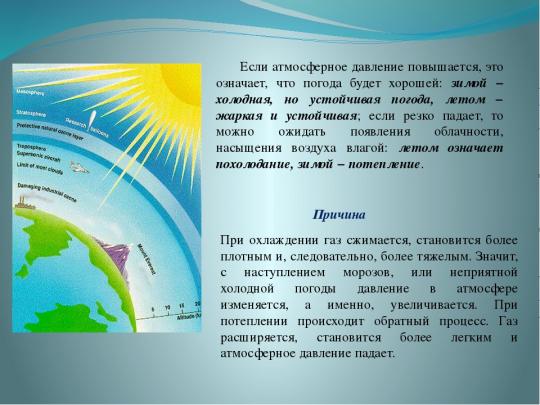
Atmospheric pressure and its effect on the state of the weather differs depending on the place and time. It changes with altitude. Moreover, there are dynamic changes associated with the movement of areas of high (anticyclones) and low pressure (cyclones).
Changes in the weather associated with atmospheric pressure arise from the movement of air masses between areas of different pressures. The movement of air masses is formed by the wind, the speed of which depends on the difference in pressure in local areas, their scale and distance from each other. In addition, the movement of air masses leads to a change in temperature.
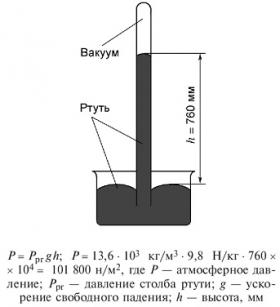
Standard atmospheric pressure is 101325 Pa, 760 mm Hg. Art. or 1.01325 bar. However, a person can safely tolerate a wide range of pressures. For example, in the city of Mexico City, the capital of Mexico with a population of almost 9 million people, the average barometric pressure is 570 mm Hg. Art.
Thus, the value of the standard pressure is accurately determined. And the comfort pressure has a significant range. This value is quite individual and completely depends on the conditions in which a particular person was born and lived. So, a sharp movement from a zone with a relatively high pressure to a lower one can affect the work of the circulatory system. However, with prolonged acclimatization, the negative impact fades away.
High and low atmospheric pressure
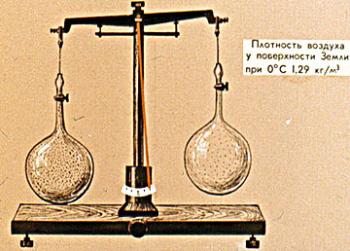
In high pressure zones, the weather is calm, the sky is cloudless and the wind is moderate. High atmospheric pressure in summer leads to heat and droughts. In low pressure zones, the weather is predominantly cloudy with wind and precipitation. Thanks to such zones, cool cloudy weather with rain comes in summer, and snowfalls occur in winter. The high pressure difference in the two areas is one of the factors leading to the formation of hurricanes and storm winds.


